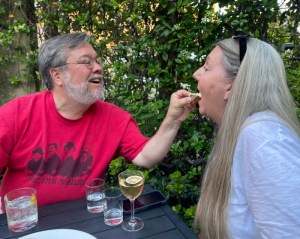Book Review: ‘Old Oxford Speaks to Me,’ by David Tatum
Published 11:00 am Wednesday, November 13, 2024
This Thursday, Nov. 14, 2024, from 6 to 8 p.m., Dave Tatum will talk and sign books at Southside Gallery on the Square.
By Allen Boyer
Dave Tatum’s memoir, “Old Oxford Speaks to Me,” looks back at Oxford across seven decades.
Trending
The book is often light-hearted and just as often meditative. It is centered on an axis that runs from Tatum’s childhood home at the top of North Lamar, passes the Square and 444, and then keeps going. Only loosely is it organized by chronology and location. More telling are the connections made by family, work, school – childhood and teenage life.
Many of the scenes and locales in this book already belong to history. This would include the farmer’s market when this meant pickup trucks and folding tables on the east side of the courthouse, and the old men passing the time of day on benches there, and the bootleggers quietly offering pint bottles.
It means Oxford’s ice house, and Parks’ Barber Shop (when this was on the northwest corner of the Square, across Jackson Avenue from Shaw & Sneed Hardware), and Wiley’s Shoe Shop, and the Bait Shop that looked across the street to St. Peter’s Church and the concrete block of Oxford’s city hall. And Cedar Oaks, when Cedar Oaks dominated the corner of North Lamar and Jefferson Avenue.
Other vignettes count as eternal. Tatum recalls boyhood slips and scrapes that sometimes were harmless and sometimes involved plaster leg casts. In later years came fender-benders and hassle of getting replacement parts, older brothers throwing out garbage that was probably beer cans.
The Rebel Drive-In, and fishing at Sardis, and driving to Johnnie’s, up beyond Abbeville and the Tallahatchie bridge. Talking with cops late at night, in dubious circumstances, and reminiscing with the same cops twenty years later. There is also – reader, be warned – a simmering undertone of golf tournaments and insurance business.
When it comes to old Oxford’s pool halls, Tatum succinctly captures the rowdiness – “dirty talk, smoking cigarettes, sneaking a drink, and playing pool.” But he also has a writer’s sense of atmosphere. Amid the cigarette smoke and shenanigans, he recalls the high school cheerleaders (nervously, genteelly) asking the proprietor to buy an ad in the yearbook.
Trending
Tatum grew up in Ammadelle, the landmark Italianate villa that anchors North Lamar. He respects the building as a structure, a solid piece of architecture designed Calvert Vaux, but maintains toward it an insider’s unawed familiarity. He recalls when his family bought the house, with the children’s mattresses lined up in the hall the first night, and the basement where the family pool table reigned, a damp storage room where the mansion’s coal had formerly been kept.
Scores of photographs illustrate this book. Many are drawn from the rich visual archives that document Oxford’s history, the work of Martin Dain, Ed Meek, and the Cofield family.
Many other photographs are the accomplished work of Deborah Freeland, who also designed the book and directed its artwork. These range from memorable views of the courthouse and Square to state-of-the-art drone work – a new view of St. Peter’s Cemetery. (A selection of these photos will be on display at Southside Gallery during the Nov. 14 reception, and subsequently.)
Ms. Freeland shows a graphic designer’s genius in matching images to memories. With washes of color, she picks out details of scenes – to dust off a Victrola gramophone like the one the Tatum family found forgotten in an attic, to enliven a playful series of photos that imagine a long-ago card game in the antebellum rooms of Cedar Oaks.
The cover is a crowning achievement. It seems to show Tatum in Old Oxford, in a vintage suit and paisley vest and cravat, cigar in hand, top hat cast aside. He may be thinking of the book’s epigraph, taken from Steinbeck: “How can we live without our lives? How will we know it’s us without our past?”
But the scene is not really Old Oxford. It is a piece of psychological trompe l’oeil – a montage that doesn’t look like one, that frames the author among ancestors’ likenesses and family snapshots and scenes from town history, all present as insets and paintings and views from tall windows. It is a meditation on things past that acknowledges its modern perspective. Tatum has worked his way to that understanding and Ms. Freeland underlines it with that image.
“Old Oxford Speaks to Me: Memories of Home, Family and Life in a Small Southern Town.”
By David G. Tatum. Cofield Press. Available from tatumbooks.com and from the author. 224
pp. $35.
Allen Boyer, writer and reviewer, grew up in Oxford.






